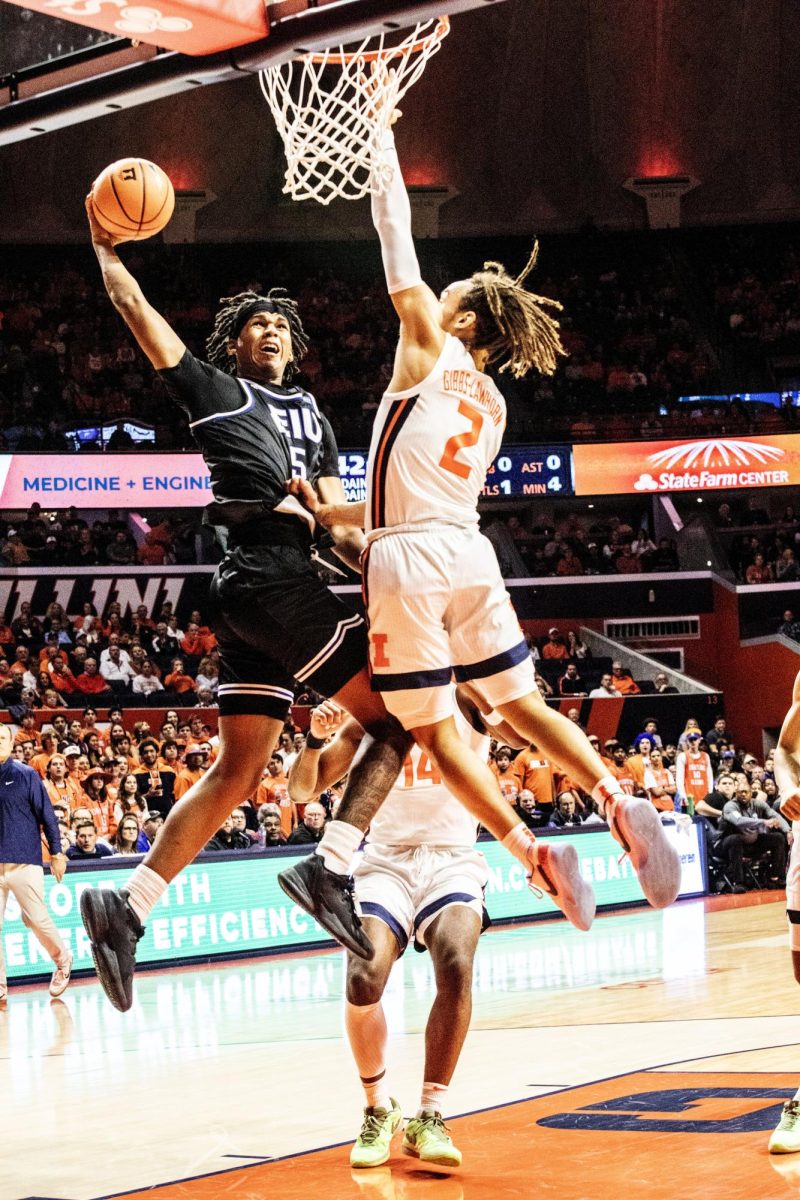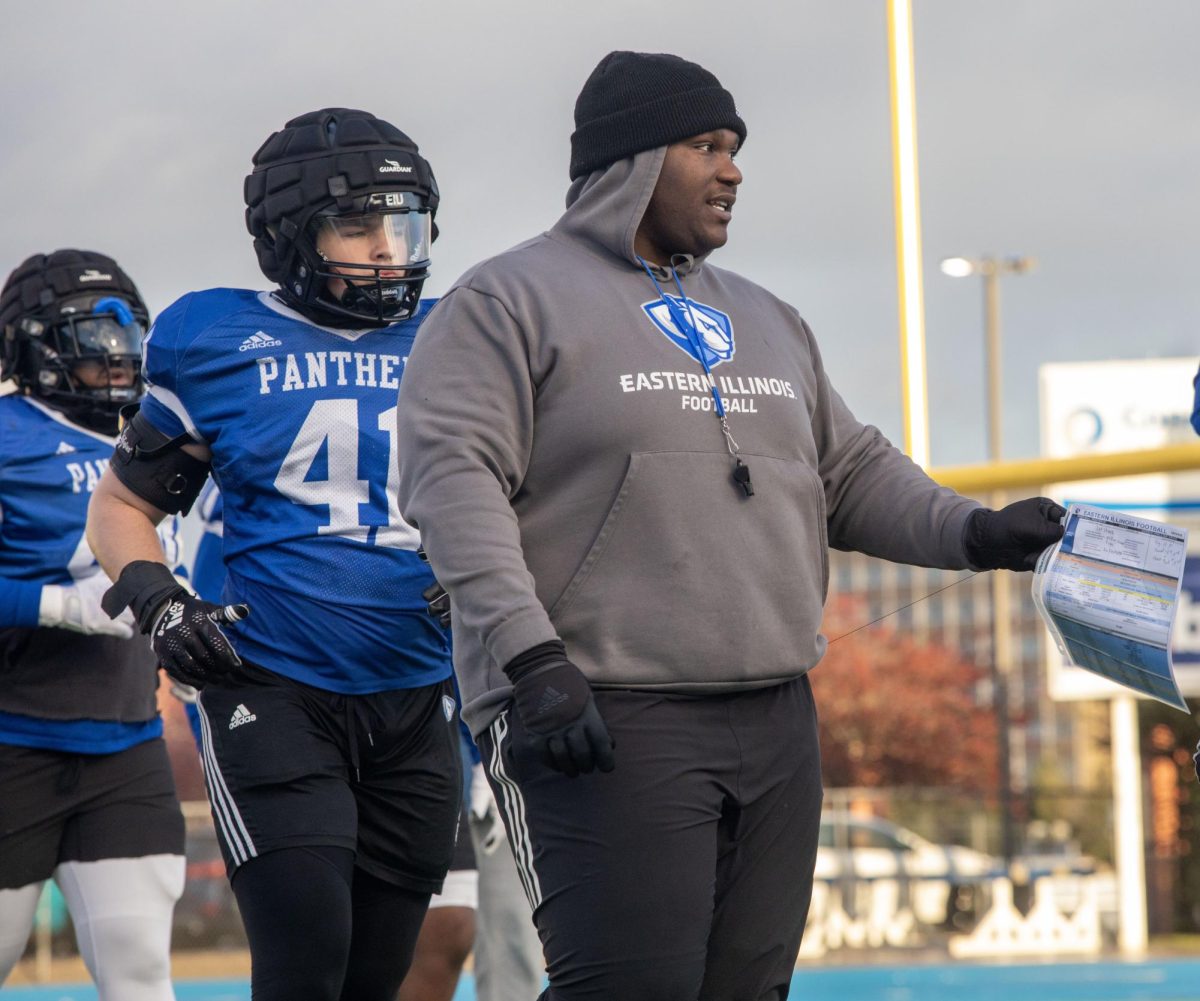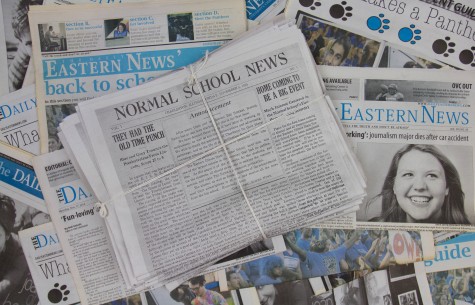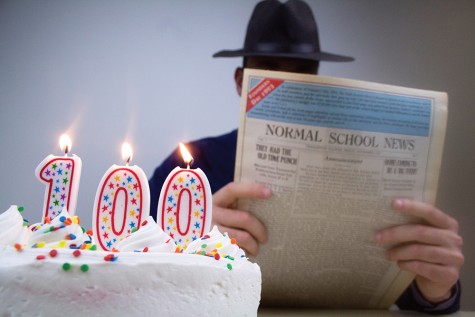Arts section stays ‘On the Verge’ of entertainment
November 4, 2015
In the 1970s, as always, Daily Eastern News reporters were busy day after day with breaking and hard news coverage, but some staff members thought arts and entertainment stories were not being covered as they should be.
And, thus, On the Verge of the Weekend was born. The first edition of the weekly supplement to The News came out Oct. 1, 1976, with 16 pages covering Parents Weekend events and feature stories.
Karen Bankston, the first Verge editor, is now the owner and a writer and editor for Precision Pros company. She said she remembers the editors’ excitement when On the Verge of the Weekend was initially thought of by News adviser Dave Reed and editor-in-chief Barry Smith.
“It was fun for other reporters who focus on a specific beat to think about different things and do a little bit more with their research and take longer with their writing,” Bankston said.
Published every Friday, the Verge was a supplement where news was factually and accurately reported, but Bankston and her staff were able to use creativity with content and design.
“It was an opportunity to cover both big issues that should matter but also to look at social interactions, explore the community and weekends, the other aspects of being a student,” Bankston said.
The first edition solidified the mission of the Verge to inform and entertain readers with novelty features, human interest stories and columns.
“When I was on staff we had our own assignments, but we all pitched in. It was a very collaborative effort when planning for a more in-depth coverage,” Banks said.
The cover of the first Verge was a large hand-drawn illustration featuring Eastern’s castle, a football flying through a field goal, a large turkey dinner and a portrait of renowned alum Burl Ives. Hal Ziebart drew the cover illustration.
This style of large hand-drawn images was consistent throughout the section with maps, figures and flags typically in green or black ink
The Verge today continues its original mission of being dedicated to covering the arts and entertainment happening on and off campus during the weekend, but changes have occurred.
The similarities include using large graphics, photos and headlines on the front cover.
2008 Verge editor Marco Santana, now a reporter for the Orlando Sentinel, shared the same vision using the publication as a vehicle to be a voice for the student body, faculty, staff and community members.
“The Verge can be as big of a vehicle to campus culture as they want it to be as far as what they highlight because that was a way to connect to the campus,” Santana said.
Santana remembers that his Verge staff was filled with aspiring journalists, mainly freshmen and sophomores.
“I had to keep them energized, enthused, try to keep them coming back and teach them news worthiness,” Santana said. “I understood why they were there. It was just a matter of letting them practice and write about things they like.”
The Verge began to specialize in writing about offbeat interest groups around campus, shining light on the quirks and niches of the student population that most people were unaware of, Santana said.
Santana said one of his reporters was a fanatic over the television series “Robot Chicken,” so he encouraged the reporter to write a review and set up an interview with the director of the show.
“It was one of my favorite stories because I let another person realize that journalism is a pretty cool field and you can reach out to celebrities,” Santana said.
The Verge always has the potential to drive culture because it can report about the subculture for people who would not have heard about it otherwise, Santana said.
Because of technological advances, the flag of the Verge is bolder, uses multi-colored graphics throughout the pages and more visual effects in the layout.
One of the Verge’s memorable graphic designs was the Academy Awards edition in 2007. The cover had red curtains and several boards of director’s takes framing the page, a large golden award with a hand- drawn crown, envelopes and kilt.
Much like Santana, Stephanie Markham, the 2013-14 Verge editor, used her experience with the supplement and became editor-in-chief of The Daily Eastern News.
While Markham was editor, the Verge won two first-place awards for the best entertainment supplement in the state from the Illinois College Press Association. Markham said winning those awards was an incredible experience.
“We go to the conference every year, but you don’t expect to hear your name,” Markham said. “I never put my whole heart and soul into something before, but it was one of the most rewarding things.”
One of the editions that won this award was the “Geek Week” spread, published during the same time as Greek Week.
“We cover Greek Week every year, but people devote just as much time in different things like cos-play and the Harry Potter club,” Markham said.
The edition had bright colors with a pixelated nameplate, with two characters playing tug-of-war with a video console.
Using bright graphics and covering different cultures within the Eastern community aligns with the mission of the Verge.
Traditionally, the biggest editions of the year are for Homecoming and Family Weekend, harking back to the Verge’s beginning covering what was then called Parents Weekend. On those weekends, the Verge runs full color and features innovative design.
Throughout the years the heartbeat of the publication still lives on: to inform, entertain and be a voice for the students who stay on campus over the weekend.
Kalyn Hayslett can be reached at 581-2812 or [email protected]











































